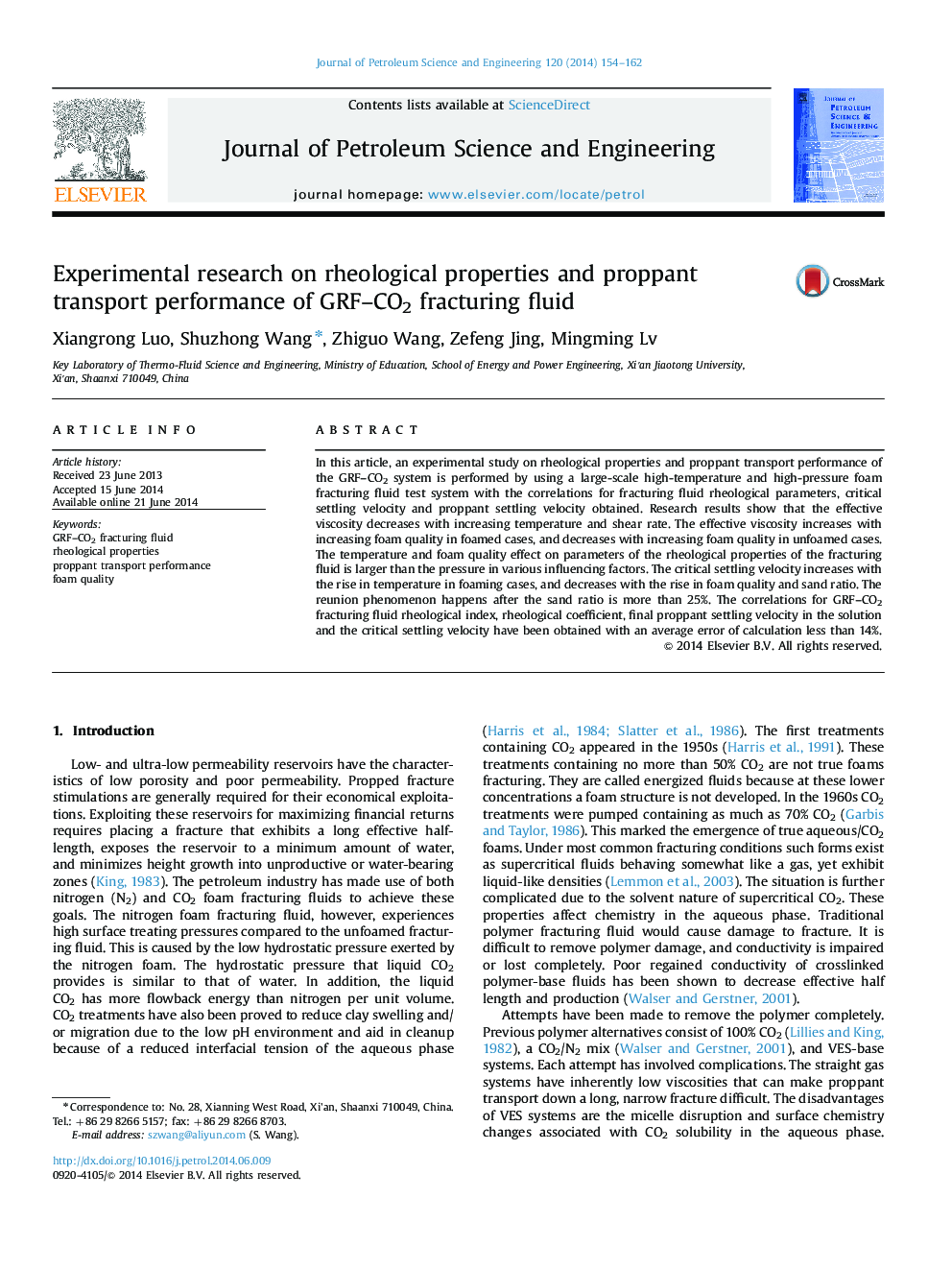| Article ID | Journal | Published Year | Pages | File Type |
|---|---|---|---|---|
| 1755041 | Journal of Petroleum Science and Engineering | 2014 | 9 Pages |
•Temperature and foam quality effects are larger than pressure in various factors.•The highest foam quality of GRF–CO2 fracturing fluids should be controlled within 75%.•The correlations for GRF–CO2 fracturing fluids have been obtained with the average error less than 14%.
In this article, an experimental study on rheological properties and proppant transport performance of the GRF–CO2 system is performed by using a large-scale high-temperature and high-pressure foam fracturing fluid test system with the correlations for fracturing fluid rheological parameters, critical settling velocity and proppant settling velocity obtained. Research results show that the effective viscosity decreases with increasing temperature and shear rate. The effective viscosity increases with increasing foam quality in foamed cases, and decreases with increasing foam quality in unfoamed cases. The temperature and foam quality effect on parameters of the rheological properties of the fracturing fluid is larger than the pressure in various influencing factors. The critical settling velocity increases with the rise in temperature in foaming cases, and decreases with the rise in foam quality and sand ratio. The reunion phenomenon happens after the sand ratio is more than 25%. The correlations for GRF–CO2 fracturing fluid rheological index, rheological coefficient, final proppant settling velocity in the solution and the critical settling velocity have been obtained with an average error of calculation less than 14%.
